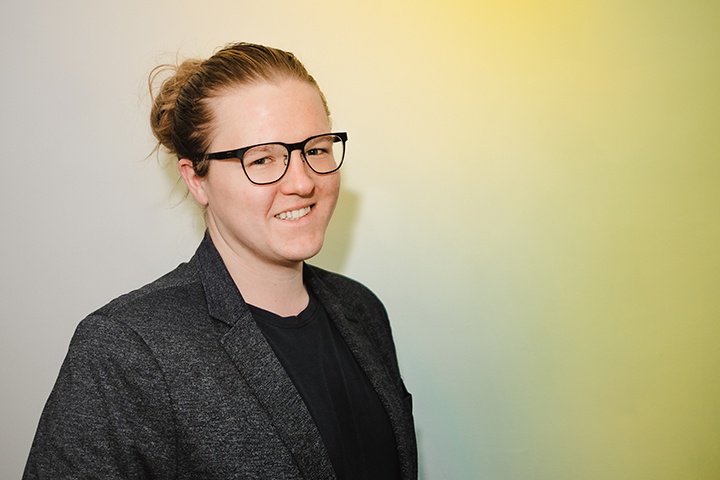SSP PhD uses computational analysis to understand expansive oral history archives

Milliff marries two methods of analyzing the content of oral history interviews: the human mind and, in true MIT fashion, computational analysis.
Two families are affected by extreme violence in their home city. One family chooses to flee, leaving their life behind for another land. Another, facing the same violence, chooses to stay put.
What explains the starkly different decisions people make when faced with similar circumstances during violence?
Over the course of his career as an MIT PhD student, SSP’s Aidan Milliff has devoted his research to uncovering the reasons behind these decisions. Specifically, Milliff draws out objective findings from some of the most deeply subjective sources: Oral history interviews with those who have faced violence.
Milliff marries two methods of analyzing the content of oral history interviews: the human mind and, in true MIT fashion, computational analysis.
His dissertation focuses on this kind of two-track analysis of oral history interviews. His focus is on interviews granted by Sikh people who were confronted with sectarian violence in India in the 1980s. For this work, Milliff was named a USIP Peace Scholar Fellow for 2021-2022. The award grants him resources to continue working on his dissertation project.
To produce a detailed analysis of, in this case, over 500 hours of interviews, Milliff reads the content himself, and gets a little help from a computer. Manually, he reads the full range of interviews, and codes particular sections that are relevant to his research.
He also designed a system of computational analysis that reads and codes the interviews itself.
Such a practice achieves two different goals. The computational analysis acts as a “check” on the subjective nature of oral history interviews, for one.
“The computational tools provide a way to show people that what you found is credible and consistent,” Milliff said during an interview.
“When you are analyzing your interviews qualitatively, I think it is easy to subconsciously put more weight on some interviews and less on others. There are some [interview subjects] you just click with better than with others. And those interviews, the ones where you felt like you were developing a connection, they might seem like they were really revelatory, or you know, provided a lot of novel ideas,” Milliff said.
Computational analysis allows a researcher to double check their intuition in these situations, making sure one’s personal connections to certain subjects don’t cloud their manual coding of findings.
“I use computational tools to repeat my work,” he says. “And I present those [interpretations] side by side as different ways to see the patterns that I'm finding in those data.”
Additionally, Milliff hopes his research shows other scholars the potential associated with computational analysis of oral histories.
“There are oral history collections out there that I would love to analyze someday and they are just too big to read… So there, the computational tools would serve a new purpose. They could help you understand patterns [in oral histories] that you can't go all the way through by hand.”
India
Milliff has been interested in the political history of India since he was an undergraduate.
For this project, Milliff is analyzing oral history interviews which focus on Indian Sikhs who encountered violence via rural insurgences and urban massacres during the 1980s. The interviews were conducted by a civil society group in California that sought to preserve the human stories of internal violence in India in 1984.
Fundamentally, Milliff wants to understand: “What makes people flee their homes?”
“It's a very personal choice, but when people are doing it in large numbers, it has [widespread] political and economic consequences,” he said. “When people flee, they change the composition and the nature of the communities they're leaving by virtue of going away.”
The experience of violence Milliff is studying, known colloquially as the “1984 anti-Sikh riots,” occurred after the assassination of Indian prime minister Indira Gandhi by Sikh bodyguards. Widely understood as a pogrom, an organized massacre of a particular ethnic group, official estimates place the death toll at 3,000 people, but those estimates are widely debated.
After the violence, at least 20,000 Sikhs left their home cities.
The 1984 pogroms against Sikh Indians remains important in Indian political debates today, as well as in the United States and other areas of diaspora, Milliff says.
“It has a really enduring relevance for Indian politics, especially politics in north India,” he said. “It is also relevant in the US and Canada, and in the UK, because people who migrated after this violence are politically relevant immigrant communities in places like California, New Jersey, British Columbia, Ontario, and all over the UK.”
Originally posted at http://ssp.mit.edu.ezproxy.canberra.edu.au